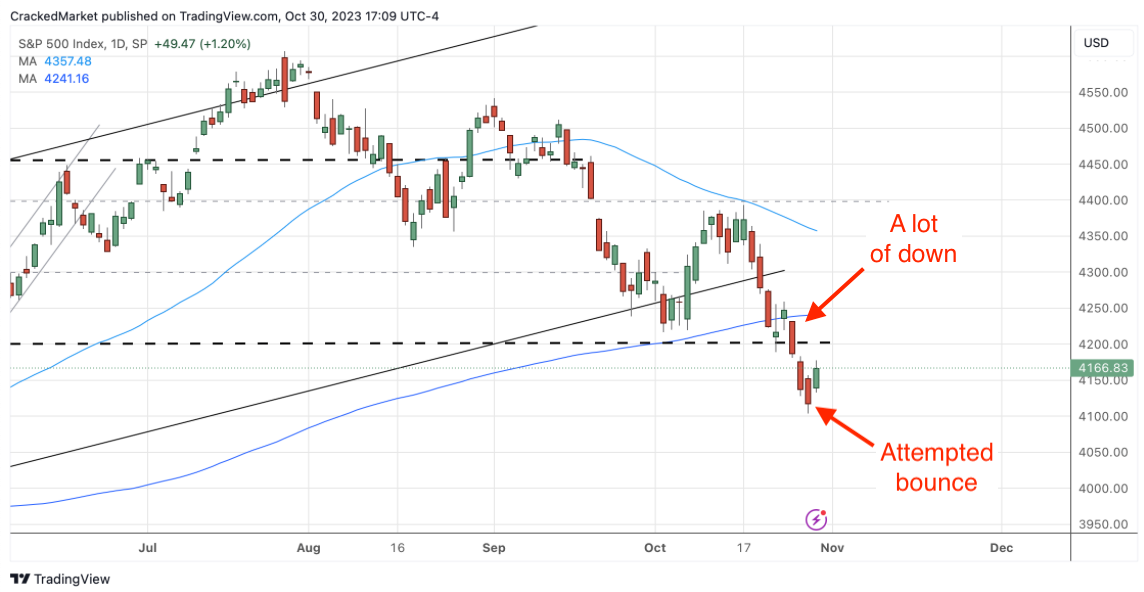The S&P 500 bounced 1.2% Monday.
We didn’t get a meaningful improvement in headlines over the weekend, but after eight of the previous nine trading sessions ended in the red, a green day was inevitable.

As everyone knows, stocks don’t move in straight lines. After a bit of down, it was finally time for a bit of up. It doesn’t matter why. Running out of sellers is just one of those things that happens naturally. And Monday was that day.
Last week, I said I was looking for a bounce, and Monday’s price action definitely qualifies:
Remember, stocks top when everything looks great, and they bottom when everything looks terrible. By that measure, this is definitely a good time to be bottom-fishing. To be clear, I am 100% opposed to buying on the way down.
But every time we bounce, you will find me jumping in. Start small, get in early, keep a nearby stop, and only add to a position that’s working. Follow those simple rules, and bottom-fishing is extremely profitable.
I have no idea if Monday’s bounce will stick, but it was a good start, and that’s all I needed to put on a partial position. Start small, get in early, keep a nearby stop, and only add to a trade that’s working.
If the index retreats today, I will pull the plug for a small loss and try again next time. If the rebound keeps going, I will add more and lift my initial stops to near my entry points, greatly reducing my risk.
As I frequently remind readers, buying bounces is hard because two-thirds of them fail. But if we limit our losses on the false starts by entering with partial positions and keeping stops nearby, riding a winner higher with a full position will more than offset any previous losses.
I have no idea if Monday’s bounce is the real deal, but it gave me a low-risk entry, and I took it. If this one doesn’t work, no big deal, I take a small loss and try again next time.
But if the index bounces a little further today, I will lift my stops near my entry points, turning this into a nearly free trade. It is hard to complain about that.
